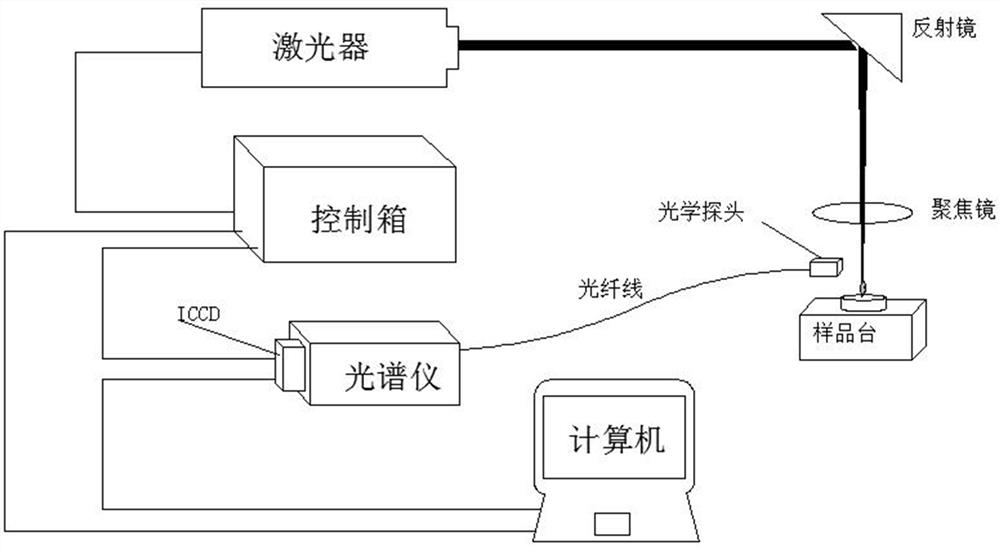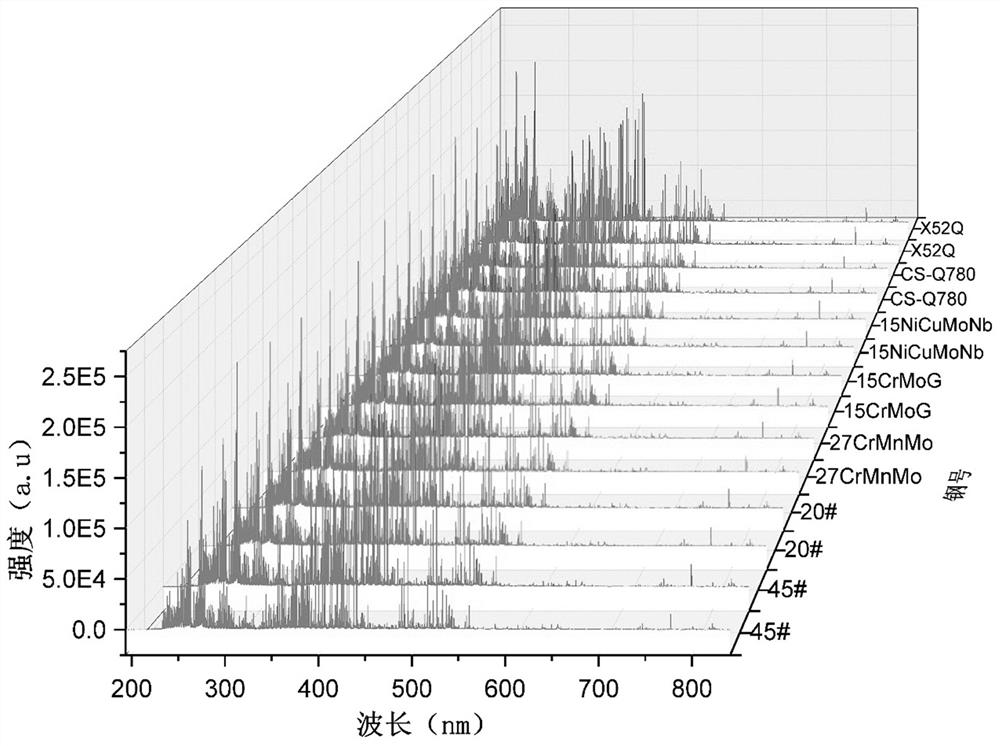A quantitative method for steel samples combined with laser-induced breakdown spectroscopy
A laser-induced breakdown and spectroscopy technology, applied in the field of spectral analysis, can solve the problems of difficulty in correctly judging different types of steel samples, unsuitable for on-site real-time analysis requirements, and differences in the components of the manufacturing process, so as to extend the linear range. , the effect of improving robustness test and reducing computational cost
- Summary
- Abstract
- Description
- Claims
- Application Information
AI Technical Summary
Problems solved by technology
Method used
Image
Examples
Embodiment 1
[0049] A quantitative method for steel samples combined with laser-induced breakdown spectroscopy, through wavelet packet transform and an improved correlation vector machine kernel function quantitative analysis method combined with laser-induced breakdown spectroscopy to achieve rapid quantitative detection of steel samples, including the following steps :
[0050] 1) Collect spectral data to form two sets of data sets;
[0051] 2) Use the wavelet packet transform method to extract the features of the data set, convert the spectral peak intensity into wavelet energy for representation, and apply the wavelet packet energy as an input to the vector machine regression model;
[0052] 3) Establish a vector machine regression model, and perform modeling to predict the content.
Embodiment 2
[0054] The present embodiment is further optimized on the basis of the above-described embodiments, and further to better realize the present invention, the following setting mode is adopted in particular: the step 1) specifically includes the following steps:
[0055] 1.1) The laser-induced breakdown spectroscopy device is used to collect spectral data of steel samples of different steel grades at different measurement points;
[0056] 1.2) Randomly and evenly divide the collected spectral data into two groups, one group is used as a training set, and the other group is used as a test set; the selected training set data includes the maximum and minimum changes in the content of the entire steel sample, and the test set data Does not include the steel content involved in the training set.
Embodiment 3
[0058] This embodiment is further optimized on the basis of any of the above-mentioned embodiments. Further, in order to better realize the present invention, the following setting mode is adopted in particular: said step 2) includes the following specific steps:
[0059] 2.1) Perform data normalization preprocessing on the characteristic spectral lines of the training set and the characteristic spectral lines of the test set respectively with wavelet packet transform;
[0060] 2.2) The wavelet packet transform uses dB4 as the wavelet basis function, and performs three-layer decomposition on the characteristic spectral lines of the training set and the characteristic spectral lines of the test set;
[0061] 2.3) After step 2.2), the three-layer wavelet packet coefficients of the training set and the three-layer wavelet packet coefficients of the test set are respectively obtained; wherein the third layer includes 8 nodes, and each node represents a corresponding section of freq...
PUM
 Login to View More
Login to View More Abstract
Description
Claims
Application Information
 Login to View More
Login to View More - R&D
- Intellectual Property
- Life Sciences
- Materials
- Tech Scout
- Unparalleled Data Quality
- Higher Quality Content
- 60% Fewer Hallucinations
Browse by: Latest US Patents, China's latest patents, Technical Efficacy Thesaurus, Application Domain, Technology Topic, Popular Technical Reports.
© 2025 PatSnap. All rights reserved.Legal|Privacy policy|Modern Slavery Act Transparency Statement|Sitemap|About US| Contact US: help@patsnap.com



